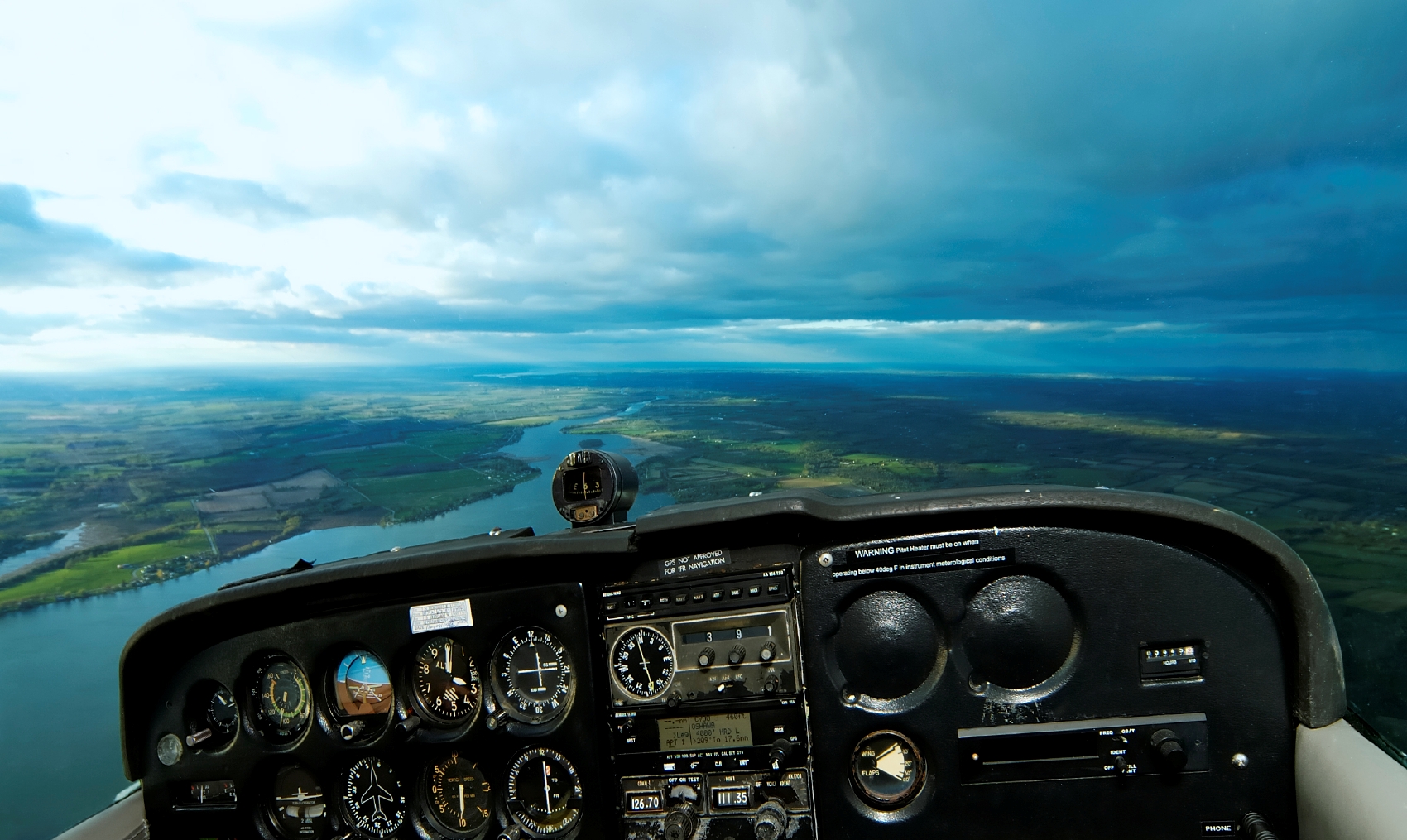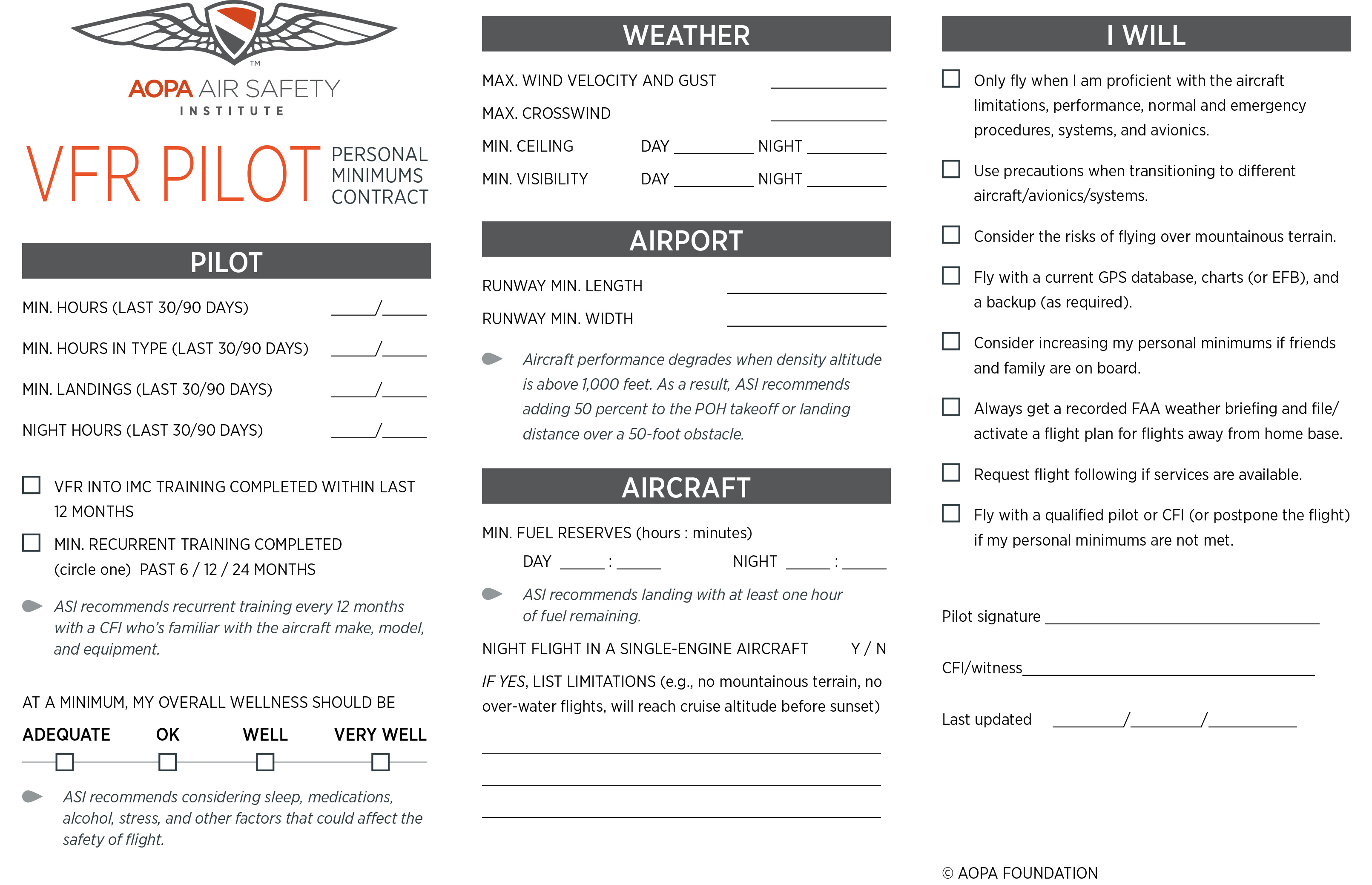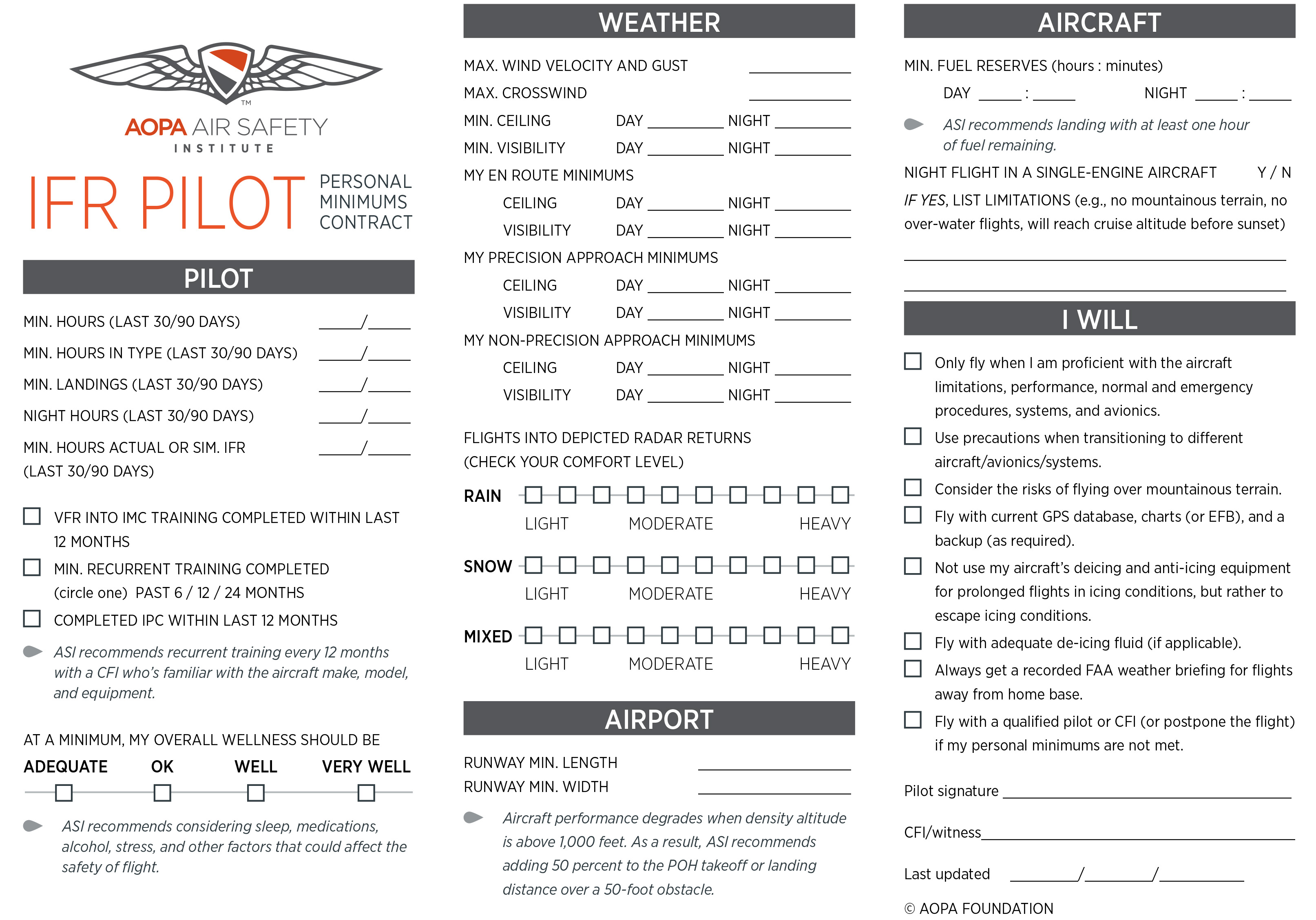Personal Minimums
Safety Spotlight: Do the Right Thing

We each bring a unique mix of experience, knowledge, skill, and proficiency to the cockpit, and operations that are perfectly safe for one pilot may be quite hazardous for another. So how do we decide what’s safe for us? It boils down to drawing up a personal minimums contract with ourselves, our passengers, and our family—and honoring that contract each time we fly.
It’s not enough to just document personal minimums—you should consult them before each flight.Why a Contract?
It’s important to recognize that astute decisions are much easier to make when not preoccupied with flying. That’s why writing down personal minimums in advance of a flight is so important. It provides solid guidance during preflight decision making. It also reduces the risk of “mentally negotiating” yourself into a tight spot in the heat of the moment during flight when influenced by emotion and hope of a successful outcome.
Fly Within Your Personal Minimums
Download the AOPA Air Safety Institute’s VFR and IFR personal minimums contracts to help you get started.
Evaluate the Flight Afterwards
Once you’re on the ground, it’s a good idea to spend a few minutes going over the flight in your head. What went right? What went wrong? Were there problems, or potential problems? Could you have anticipated and recognized them sooner? Score yourself. Be as objective as possible, and don’t grade on the curve. If you do this consistently, you’ll soon find yourself catching problems earlier and dealing with them more effectively.
Personal Minimums Strategies
-
Document and consult—It’s not enough to just document personal minimums—you should consult them before each flight.
-
Anticipate—Ask yourself what factors might affect your trip.
-
Be honest—Are you comfortable completing the flight?
-
Don’t gamble—Avoid pressure to decrease your minimums.
-
Carry the document—Take a copy of your personal minimums contract with you in the cockpit.
-
Proficiency—Update your personal minimums regularly to reflect your current proficiency level in the aircraft you’ll be flying.
-
New rating—If you’ve recently earned a new certificate or rating, ask your CFI to help you determine a reasonable baseline to match your new skills.

